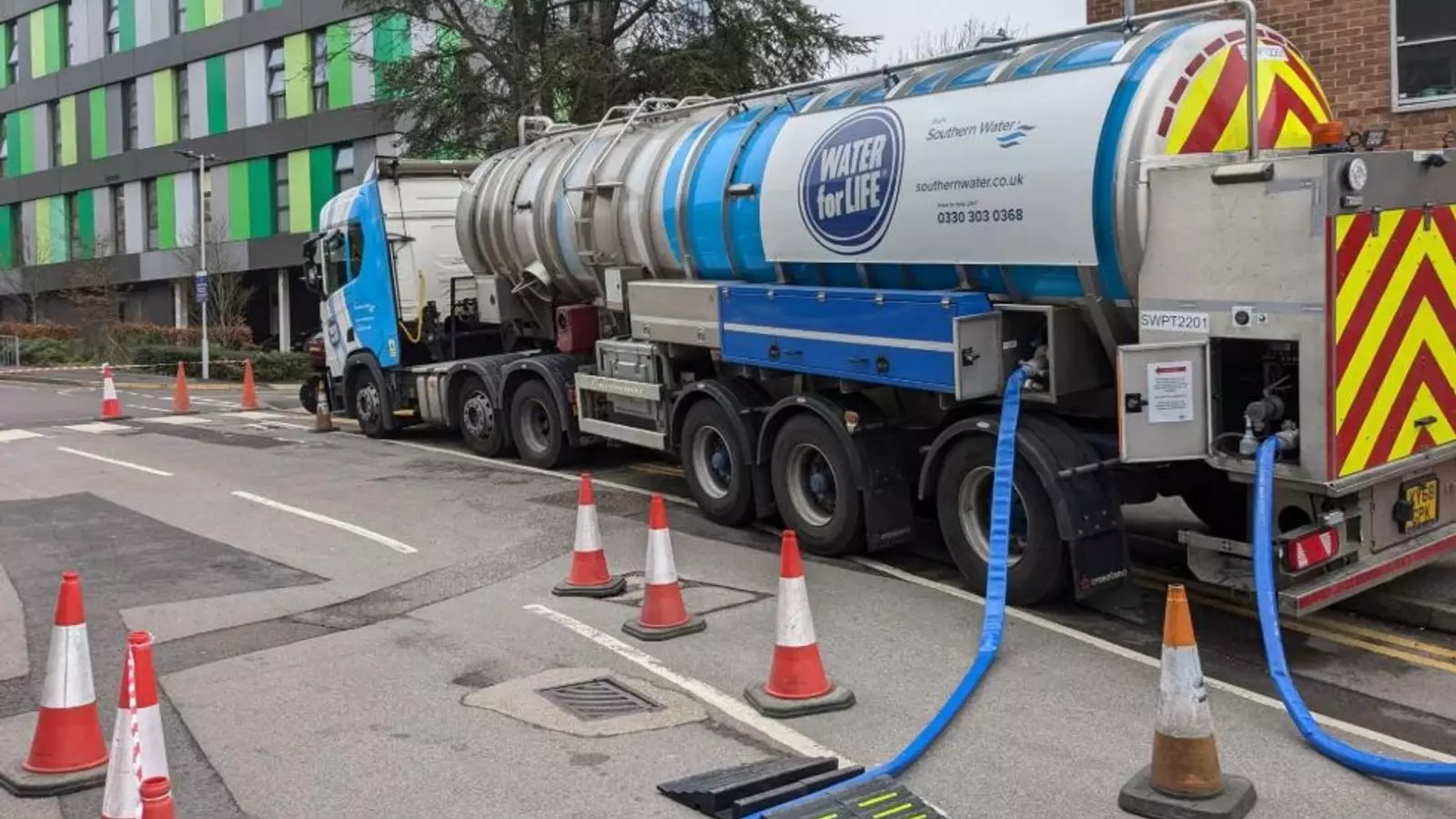A significant situation has arisen in Hampshire, with approximately 60,000 homes experiencing water supply disruptions. Southern Water attributed the issue to a “technical problem” at the Testwood water supply works, which has prevented water from being dispatched to various affected areas, including Southampton, Romsey, Eastleigh, Totton, and parts of the New Forest. As a result, residents have encountered long waits at temporary water relief stations set up in locations such as the Places Leisure Centre in Eastleigh and major superstore chains like Sainsbury’s and Asda. This disruption not only highlights the vulnerability of crucial water infrastructure but also the immediate impact on the daily lives of Hampshire residents.
In response to the crisis, Southern Water has assured the public that it is working diligently to restore normal supply levels. The company has placed a dedicated focus on its priority customers, ensuring that vital resources are delivered to essential services like Southampton General Hospital and Princess Anne Hospital. However, the company warned that the resolution of the issue may stretch into the weekend, sparking anxiety among affected residents who rely heavily on a consistent water supply for their basic needs.
Southern Water’s commitment to transparency is evident through their continuous updates regarding the outage. The estimated number of affected homes stands at around 58,000, indicating that this is not merely a localized issue; rather, it is a widespread crisis that requires a coordinated response.
Adding another layer of complexity to this situation is the anticipated rise in water bills. As Southern Water and other companies like Thames Water prepare to announce substantial charges, many households are left reeling from the dual impact of service disruption and financial strain. Southern Water has proposed an alarming 84% increase in water bills, while Thames Water has requested a 53% rise. The energy regulator Ofwat is expected to confirm these increases, which could see water bills rise by over 20% by the year 2030. For average households, this translates to a potential yearly bill of £542, an increase of £20 annually from the current average.
Ofwat’s plans to authorize these increases come alongside a promise of substantial investments—projected to be £88 billion—aimed at enhancing service delivery and environmental protection. While the prospect of elevated bills may seem daunting, it raises the question of whether these investments will indeed address persistent infrastructural issues, like the one currently being faced in Hampshire, or whether they will merely inflate costs without providing tangible benefits.
The water crisis in Hampshire serves as a wake-up call for both utility companies and consumers alike. While immediate solutions must be prioritized to restore supply and alleviate hardship, the long-term challenge remains: how can water companies ensure reliability without imposing unsustainable costs on their customers? As Southern Water navigates this complex landscape, the need for balance between service improvement and financial feasibility has never been more critical. The coming days and weeks will reveal not only the company’s crisis management capabilities but also the resilience of a community brought to the brink by unexpected challenges.


Leave a Reply